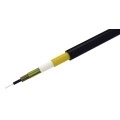Enhancing Quality and Reliability in Indoor Optical Cable Systems

Indoor optical cables play a crucial role in ensuring high-speed internet connectivity and reliable network communication. To ensure the quality and reliability of these cables, standardized testing and acceptance methods are employed. This article provides a comprehensive overview of the standardized testing and acceptance methods for indoor optical cables.
1. Cable Construction and Manufacturing
The first step in ensuring the quality of indoor optical cables is the construction and manufacturing process. Fiber optic cables consist of various components, including the fiber core, cladding, buffer, strength members, and cable jacket. Each component undergoes rigorous testing and quality control measures to meet industry standards.
To ensure the cable's performance, cable manufacturers must adhere to stringent manufacturing processes that include precise fiber positioning, proper buffering, and cable jacketing. These processes are essential to minimize signal loss, reduce attenuation, and enhance overall cable durability.
2. Performance Testing
After the manufacturing process, indoor optical cables undergo performance testing to evaluate their suitability for various applications. Performance testing involves examining key parameters such as attenuation, insertion loss, bandwidth, tensile strength, and temperature range.
Attenuation and insertion loss testing are conducted to measure the signal loss over the cable length. A lower attenuation value indicates better signal quality. Bandwidth testing determines the cable's data-carrying capacity and its ability to support high-speed communication. Tensile strength testing evaluates the cable's ability to withstand pulling forces without breaking. Temperature range testing ensures the cable's performance under different temperature conditions.
3. Environmental Testing
Indoor optical cables are also subjected to environmental testing to ensure their performance in real-world conditions. These tests simulate various environmental factors such as temperature extremes, humidity, and exposure to chemicals. Environmental testing helps identify potential weaknesses in the cable's construction and allows manufacturers to address them before deployment.
Additionally, environmental testing includes flame resistance testing to ensure the cable's compliance with fire safety regulations. Flame-resistant cables are crucial for applications where fire hazards may be present, such as commercial buildings and data centers.
Overall, standardized testing and acceptance methods are essential to guarantee the quality, reliability, and safety of indoor optical cables. By adhering to these standardized procedures, cable manufacturers can provide high-performance products that meet the demands of modern network infrastructure.
Conclusion
Standardized testing and acceptance methods for indoor optical cables play a vital role in maintaining high-quality network communication. The construction and manufacturing process, performance testing, and environmental testing are key components of these methods. By ensuring adherence to industry standards, indoor optical cables can reliably support fast and stable data transmission, contributing to the seamless functioning of modern communication systems.



